Journal article
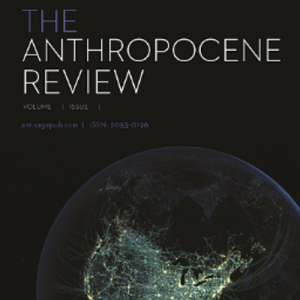
Communication of Solar Geoengineering Science: Forms, Examples, and Explanation of Skewing
Although a judicious use of solar radiation modification (SRM, or solar geoengineering) appears able to reduce climate change, SRM would create risks of its own. How results and conclusions are conveyed is important. This article describes nine cases in which scientific articles and their official press releases communicate results inaccurately: by inappropriately comparing SRM with a reference world of non-elevated greenhouse gas concentrations; focusing on the residual climatic anomalies that SRM would not entirely eliminate; generalizing a predictably harmful assumed implementation regime to all possible SRM; or reporting conclusions that the paper does not substantiate. Notably, each of these cases unduly amplifies SRM’s apparent risks and limitations. Collectively they may skew SRM communication and cause negative impacts on scientific assessments, news reporting, and policy discussions. The article suggests explanations for why SRM scientists and their official communicators sometimes inaccurately convey their results as well as how they and others should respond.
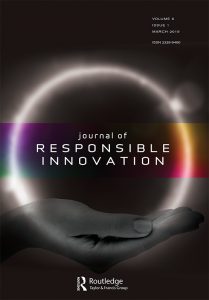
If Deliberation is the Answer, What is the Question? Objectives and Evaluation of Public Participation and Engagement in Science and Technology
Public participation and engagement in decision-making regarding science and technology (‘PP&E’) is an increasingly common practice. But what is known of whether PP&E achieves its goals? Surprisingly, little research evaluates PP&E. We put forth three reasons why PP&E advocates and practitioners should take evaluation seriously: the absence of evaluation causes PP&E’s advocacy to fail a minimal burden-of-proof standard; PP&E’s costs are greater than they appear; and these costs may be disproportionately borne by the already-disadvantaged. Evaluating PP&E would require identifying PP&E’s objectives and assessing its success in meeting them. To this end we survey scholarship advocating PP&E and identify three sets of objectives: substantively improving decision-making, deontologically fulfilling widely-held norms, and politically redistributing power away from techno-scientific elites. While there is some ad hoc evidence of progress toward these goals, we find no robust evaluation of PP&E. We offer four recommendations that might assist in evaluating PP&E more thoroughly.
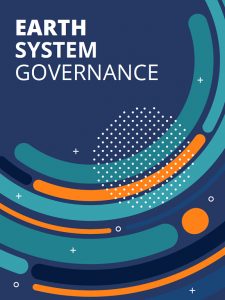
A Preliminary Framework for Understanding the Governance of Novel Environmental Technologies: Ambiguity, Indeterminateness and Drift
We propose a conceptual framework to explain why some technologies are more difficult to govern than others in global environmental governance. We start from the observation that some technologies pose transboundary environmental risks, some provide capacities for managing such risks, and some do both. For “ambiguous” technologies, potential risks and risk management capacities are uncertain, unknown or even unknowable. Governance systems are indeterminate towards ambiguous technologies, as existing norms, rules, scripts and routines do not imply default solutions under institutional focal points. Indeterminateness can lead to institutional drift, with risks accordingly remaining unmitigated and risk management capacities remaining unexploited. We use the cases of solar geoengineering, gene drive systems and bioinformatics for illustrating this framework. As technological ambiguity may often be irresolvable, we conclude that it might force us to confront the limits to anticipatory global decision-making on matters of long-term environmental sustainability.

Informing Solar Geoengineering Policy
As the prospect of average global warming exceeding 1.5°C becomes increasingly likely, interest in supplementing mitigation and adaptation with solar geoengineering (SG) responses will almost certainly rise. For example stratospheric aerosol injection to cool the planet could offset some of the warming for a given accumulation of atmospheric greenhouse gases. However, the physical and social science literature on SG remains modest compared with mitigation and adaptation. We outline three research themes for advancing policy-relevant social science related to SG: (i) SG costs, benefits, risks, and uncertainty; (ii) the political economy of SG deployment; and (iii) SG’s role in a climate strategy portfolio.
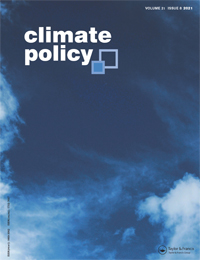
Linking Solar Geoengineering and Emissions Reductions: Strategically Resolving an International Climate Change Policy Dilemma
Solar geoengineering appears able to reduce climate change risks but raises controversy, the leading cause of which is the concern that its research, development, and evaluation might inappropriately obstruct efforts to cut greenhouse gas emissions (‘mitigation’). Describing how policies could effectively and feasibly manage such possible mitigation obstruction has proven elusive. One option would be to strategically link the international policies of mitigation and solar geoengineering. Here I explore this by disaggregating states based on their relevant characteristics. I propose linkages of mitigation policy with: (1) solar geoengineering research and development, (2) decision-making regarding whether to deploy solar geoengineering, and (3) how to deploy solar geoengineering. Based on the incentives that states would face under them, these linkages are assessed on whether they can be expected to effectively increase mitigation and are seem minimally feasible. Linkages in each of the three categories have potential and could occur sequentially. In the linkage which I believe has the greatest potential, one or more states would proclaim their right to deploy solar geoengineering if and only if they meet their own mitigation goals and the rest of the world insufficiently mitigates, and would promise to forego deployment if either condition is not met. I identify this proposed linkage’s possible challenges, including legitimacy, credibility, optimal size, relations among targets of the linkage, stringency of mitigation goals, and potential counter-productivity. Limitations to this exploration and assessment include the speculative nature, the assumption that states’ preferences regarding mitigation and solar geoengineering are properly related, and the use of noncooperative linkage.
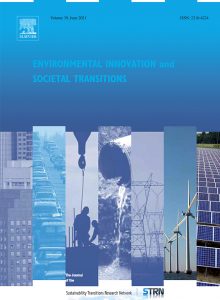
Earth System Interventions as Technologies of the Anthropocene
Earth system interventions (ESIs)—intentional large-scale interventions in Earth systems—are not entirely new. However, in response to threats to sustainability, particularly from climate change and biodiversity loss, some scientists and others are researching, developing, and using new, largely technological ESIs. These include carbon dioxide removal, solar geoengineering, in situ genetically modified organisms, gene drive organisms, de-extinction, and high-tech ecosystem restoration. Some emerging ESIs appear to be effective and feasible, both technically and economically, and may be necessary to achieve important sustainability and human welfare objectives. They also pose serious environmental risks. This paper identifies more than a dozen social, political, and ethical challenges that are common across many of the emerging technological ESIs. Governance could mitigate and manage these issues, and it would be made more effective and robust by understanding and treating new ESIs as such and as a potentially transformative set of innovations in human-Earth system relations.
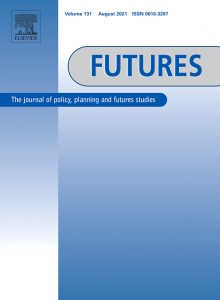
Solar Geoengineering: Scenarios of Future Governance Challenges
In the face of increasingly clear climate-change impacts and continued inadequacy of efforts to reduce greenhouse-gas emissions and adapt to ongoing climate changes, increasing attention has been directed to geoengineering: deliberate large-scale interventions in the Earth’s climate system to moderate global warming. Such interventions could reduce risks in novel ways, but are controversial because they present an uncertain, high-stakes mix of potential benefits and risks. Solar geoengineering poses especially acute international governance needs, particularly in the case of potential future demands to use it. Many aspects of geoengineering present deep, ill-structured uncertainties that carry high stakes for near-term decisions, and are thus suitable for exploration through scenarios. This collection of papers reports on a major scenario exercise examining governance challenges and potential responses for solar geoengineering, held at the International Summer School on Geoengineering Governance in Banff, Canada in 2019. This opening paper introduces geoengineering and the concerns it raises, particularly as they pertain to governance; reviews the design and use of scenario exercises to inform decisions under uncertainty, including their prior uses related to climate change and geoengineering; and outlines the aims, design, and process of this scenario exercise.

Solar Geoengineering Governance: Insights from a Scenario Exercise
This paper concludes the collection on an extended scenario exercise that examined governance challenges and potential responses for solar geoengineering. It synthesizes the experiences of eight participant groups who worked with four scenarios of unauthorized use of solar geoengineering. It draws both substantive insights about solar geoengineering risks and governance and methodological insights for the use of scenario exercises to explore this issue, as well as identifying major uncertainties and questions raised by the exercise. Prominent themes include the need for strategic sequencing of actions by those initiating and responding to solar geoengineering challenges; the nature and foundations of potential opposition; the widespread interest in normalizing or domesticating a disruptive intervention after the fact; the importance of embedding solar geoengineering actions in the broader context of climate policy and the difficulty of doing so given their disruptive character; and the importance and likely structure of negotiations to move from initial disruptive action, whatever its initiators and form, to broaden participation and embed solar geoengineering decisions in a broadly legitimate multilateral governance structure. In the closing section, we propose directions for further scenario-based explorations of solar geoengineering and its governance challenges.
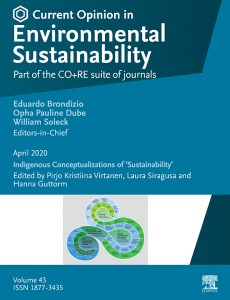
Engineering Biological Diversity: The International Governance of Synthetic Biology, Gene Drives, and De-extinction for Conservation
In the face of insufficient progress in conserving and restoring biodiversity, the in situ use of advanced genetic modification, gene drives, and other biotechnologies for conservation purposes are being considered, researched, and developed. This paper introduces the methods, applications, environmental risks, and social challenges of “conservationist synthetic biology”; reviews existing governance, with an emphasis on international instruments, institutions, and processes; and offers observations of the politics of developing further governance. The most important multilateral environmental agreement is the Convention on Biological Diversity. Governance of such conservationist synthetic biology is vital but gaps remain. The further development of governance is a political process, and conservationist synthetic biology has a political landscape that is atypical for emerging technologies.
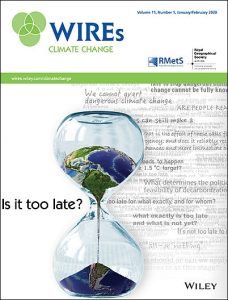
Is solar geoengineering ungovernable? A critical assessment of governance challenges identified by the Intergovernmental Panel on Climate Change
Solar radiation modification (SRM) could greatly reduce climate change and associated risks. Yet it has not been well‐received by the climate change expert community. This is evident in the authoritative reports of the Intergovernmental Panel on Climate Change (IPCC), which emphasize SRM’s governance, political, social, and ethical challenges. I find seven such challenges identified in the IPCC reports: that SRM could lessen mitigation; that its termination would cause severe climatic impacts; that researching SRM would create a “slippery slope” to its inevitable and unwanted use; that decisions to use it could be contrary to democratic norms; that the public may not accept SRM; that it could be unethical; and that decisions to use SRM could be unilateral. After assessing the extent to which these challenges are supported by existing evidence, scholarly literature, and robust logic, I conclude that, for six of the seven, the IPCC’s claims variously are speculative, fail to consider both advantages and disadvantages, implicitly make unreasonable negative assumptions, are contrary to existing evidence, and/or are meaninglessly vague. I suggest some reasons for the reports’ failure to meet the IPCC’s standards of balance, thoroughness, and accuracy, and recommend a dedicated Special Report on SRM.
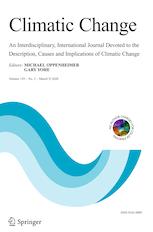
Nonstate Governance of Solar Geoengineering Research
As climate change’s risks have grown and limits to primary responses become evident, solar geoengineering (or solar radiation modification) has risen in prominence as a potential complementary response. Widespread calls for expanded research have raised objections, based on anticipated links to potential future deployment and potentially harmful interactions with other climate responses. The unique concerns raised by solar geoengineering may warrant governing associated research with more care or scrutiny than other areas, but states have not engaged the issue. Given this, we analyze the potential for nonstate actors to provide governance functions needed to enable, control, and legitimate near-term, small-scale solar geoengineering research. Drawing on the theory of regulatory processes and nonstate actors as well as evidence from other issue areas, we describe six types of nonstate actors in terms of their capacity, knowledge, and interests relevant to governing solar geoengineering research: researchers themselves, the universities or other institutions that employ them, funders, academic publishers, professional societies, and advocacy nongovernmental organizations. We conclude that suitably configured collaborations among these actors can meet the additional governance needs of near-term solar geoengineering research. We consider potential limitations to nonstate governance related to legitimacy, effectiveness, and capture, and conclude that these are not severe under present conditions, but could become stronger if research grows toward deployment. Nonstate governance may even be preferable to state regulation of small-scale scientific activities, offering more flexible early exploration of options with the possibility of later transition into more state-led and legalized governance arrangements.
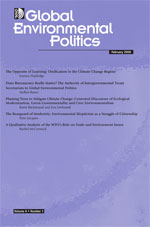
Taking Technology Seriously: Introduction to the Special Issue on New Technologies and Global Environmental Politics

Governing New Biotechnologies for Biodiversity Conservation: Gene Drives, International Law, and Emerging Politics
The outdoor use of organisms modified with gene drives – emerging biotechnologies of biased inheritance – could further human wellbeing and biodiversity conservation, yet also poses environmental risks and diverse social challenges. This article describes and analyzes the international law and politics of gene drives’ research, development, and possible use, with an emphasis on their potential biodiversity applications. The Convention on Biological Diversity is central, and its institutions and others have taken actions toward governing gene drive organisms. Gene drives’ governance and politics are contrasted with those of agricultural genetically modified organisms, with emphases on states, nonstate actors, the precautionary approach, and decision-making forums. Developing and implementing governance – especially in international forums – for gene drives may prove to be difficult. The observations and analysis here indicate that the politics of gene drive organisms is a manifestation of a larger struggle regarding emerging technologies among those concerned about sustainability.

An Earth System Governance Perspective on Solar Geoengineering
Solar geoengineering appears capable of reducing climate change and the associated risks. In part because it would be global in effect, the governance of solar geoengineering is a central concern. The Earth System Governance (ESG) Project includes many researchers who, to varying degrees, utilize a common vocabulary and research framework. Despite the clear mutual relevance of solar geoengineering and ESG, few ESG researchers have considered the topic in substantial depth. To stimulate its sustained uptake as a subject within the ESG research program, we identify significant contributions thus far by ESG scholars on the subject of solar geoengineering governance and survey the wider solar geoengineering governance literature from the perspective of the new ESG research framework. Based on this analysis, we also suggest specific potential lines of inquiry that we believe are ripe for research by ESG scholars: nonstate actors’ roles, polycentricity, public engagement and participation, and the Anthropocene.
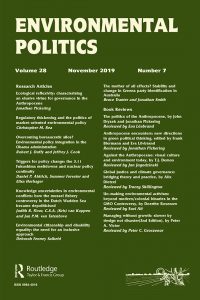
Highly Decentralized Solar Geoengineering
Nonstate actors appear to have increasing power, in part due to new technologies that alter actors’ capacities and incentives. Although solar geoengineering is typically conceived of as centralized and state-deployed, we explore highly decentralized solar geoengineering. Done perhaps through numerous small high-altitude balloons, it could be provided by nonstate actors such as environmentally motivated nongovernmental organizations or individuals. Conceivably tolerated or even covertly sponsored by states, highly decentralized solar geoengineering could move presumed action from the state arena to that of direct intervention by nonstate actors, which could in turn, disrupt international politics and pose novel challenges for technology and environmental policy. We conclude that this method appears technically possible, economically feasible, and potentially politically disruptive. Decentralization could, in principle, make control by states difficult, perhaps even rendering such control prohibitively costly and complex.

An Economic Analysis of International Environmental Rights
This article offers a descriptive and normative economic analysis of international environmental rights. States, sovereignty, international negotiations, and international law resemble legal persons, property, the market, and private law, respectively. Just as the initial entitlement of persons’ property rights is important to increasing welfare when transaction costs are significant, so too is that of states’ sovereignty rights, including those regarding the environment. What is the initial entitlement of these rights? Is this relatively efficient? How are these rights protected? The article considers three possible initial entitlements. First, states’ right to cause transboundary environmental harm and, second, their right to be free therefrom are each rejected due to weak theoretical support and insufficient state practice. These initial entitlements would also be less efficient. In contrast, an initial entitlement consisting of both the prevention of transboundary harm and the equitable use of shared natural resources is supported by theory and practice. This entitlement appears relatively efficient, and the relevant legal instruments reveal an implicit underlying economic logic. These international environmental rights are generally protected by mechanisms that resemble liability.

Solar Geoengineering to Reduce Climate Change: A Review of Governance Proposals
Although solar geoengineering (alternatively ‘solar radiation management’ or ‘solar radiation modification’) appears to offer a potentially effective, inexpensive and technologically feasible additional response to climate change, it would pose serious physical risks and social challenges. Governance of its research, development and deployment is thus salient. This article reviews proposals for governing solar geoengineering. Its research may warrant dedicated governance to facilitate effectiveness and to reduce direct and socially mediated risks. Because states are not substantially engaging with solar geoengineering, non-state actors can play important governance roles. Although the concern that solar geoengineering would harmfully lessen abatement of greenhouse gas emissions is widespread, what can be done to reduce such displacement remains unclear. A moratorium on outdoor activities that would surpass certain scales is often endorsed, but an effective one would require resolving some critical, difficult details. In the long term, how to legitimately make decisions regarding whether, when and how solar geoengineering would be used is central, and suggestions how to do so diverge. Most proposals to govern commercial actors, who could provide goods and services for solar geoengineering, focus on intellectual property policy. Compensation for possible harm from outdoor activities could be through liability or a compensation fund. The review closes with suggested lines of future inquiry.
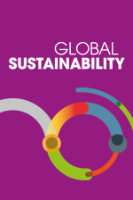
The Politics and Governance of Negative Emissions Technologies
Recent projections to stay within 2°C and especially 1.5°C rely upon both more aggressive emissions cuts and larger scales of “negative emission technologies” (NETs). Yet not only are NETs’ actual development and scalability still uncertain, the technologies would present social and environmental risks of their own. Despite the growing realization of NETs’ necessity, their international politics and policies remain amorphous and emerging. The relevant issues are complex. NETs will function across a wide range of temporal and spatial scales, affect many interrelated natural and social systems, and involve multiple sectors of society, government, and the economy. Understanding their politics and governance requires not only a diversity of perspectives, but their integration into interdisciplinary conversations and research. I organized a workshop that brought together 25 international experts to discuss the politics and governance of NETs. Its objective was to bring together diverse scholars in the social sciences to deepen the understandings of the challenges and opportunities of NETs’ research, development, and possible implementation. This editorial introduces the resulting special collection of articles in Global Sustainability.
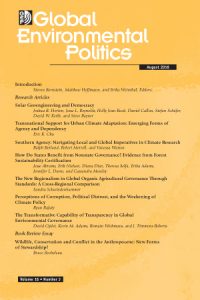
Solar Geoengineering and Democracy
Some scientists suggest that it might be possible to reflect a portion of incoming sunlight back into space to reduce climate change and its impacts. Others argue that such solar radiation management (SRM) geoengineering is inherently incompatible with democracy. In this article, we reject this incompatibility argument. First, we counterargue that technologies such as SRM lack innate political characteristics and predetermined social effects, and that democracy need not be deliberative to serve as a standard for governance. We then rebut each of the argument’s core claims, countering that (1) democratic institutions are sufficiently resilient to manage SRM, (2) opting out of governance decisions is not a fundamental democratic right, (3) SRM may not require an undue degree of technocracy, and (4) its implementation may not concentrate power and promote authoritarianism. Although we reject the incompatibility argument, we do not argue that SRM is necessarily, or even likely to be, democratic in practice.

Intellectual Property Policies for Solar Geoengineering
Governance of solar geoengineering is important and challenging, with particular concern arising from commercial actors’ involvement. Policies relating to intellectual property, including patents and trade secrets, and to data access will shape private actors’ behavior and regulate access to data and technologies. There has been little careful consideration of the possible roles of and interrelationships among commercial actors, intellectual property, and intellectual property policy. Despite the current low level of commercial activity and intellectual property rights in this domain, we expect both to grow as research and development continue. Given the public good nature of solar geoengineering, the relationship between the public and private sectors would likely assume a procurement structure. Innovative policy approaches to intellectual property and data access that are specific to solar geoengineering are warranted. These current circumstances also present opportunities for the development of policy and norms that might soon be lost. We consider some possible approaches, and recommend a bottom-up, primarily nonstate, voluntary “research commons” for patents and data that are related to solar geoengineering. This would facilitate information sharing and limit data fragmentation and trade secrecy. It would also provide an incentive for commons members to pledge to limit some forms of intellectual property acquisition and to assure access on reasonable terms, thereby limiting the need for enforcement. This should help reduce downstream barriers to innovation and to encourage the potential development of technologies at reasonable cost. Such a research commons might also catalyze the adoption of best practices in research and development.

Solar Climate Engineering and Intellectual Property: Toward a Research Commons
Climate change is one of the greatest challenges confronting society today. Solar climate engineering (SCE) has the potential to reduce climate risks substantially. This controversial technology would make the earth more reflective in order to counteract global warming. The science of SCE is still in its infancy, and SCE research and development should proceed in a coordinated, responsible, and expeditious fashion. However, the roles of patents, research data, and trade secrets in SCE research remain unclear and contested. To this end, this article identifies concerns that may arise from the acquisition of intellectual property rights in SCE and proposes the formation of an SCE “research commons” and “pledging” to facilitate responsible SCE research and development. This research commons would permit public and private sector research institutions around the globe to share their research data. They would also pledge to avoid trade secret protections and that any patents they obtain would be managed so as to reduce unnecessary barriers to research and development of safe and effective SCE technologies.
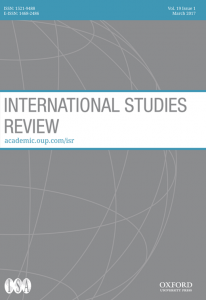
The International Politics of Climate Engineering: A Review and Prospectus for International Relations

Five Solar Geoengineering Tropes That Have Outstayed Their Welcome
In the last decade, solar geoengineering (solar radiation management, or SRM) has received increasing consideration as a potential means to reduce risks of anthropogenic climate change. Some ideas regarding SRM that have been proposed have receded after being appropriately scrutinized, while others have strengthened through testing and critique. This process has improved the understanding of SRM’s potential and limitations. However, several claims are frequently made in the academic and popular SRM discourses and, despite evidence to the contrary, pose the risk of hardening into accepted facts. Here, in order to foster a more productive and honest debate, we identify, describe, and refute five of the most problematic claims that are unsupported by existing evidence, unlikely to occur, or greatly exaggerated. These are: (A) once started, SRM cannot be stopped; (B) SRM is a right-wing project; (C) SRM would cost only a few billion dollars per year; (D) modeling studies indicate that SRM would disrupt monsoon precipitation; and (E) there is an international prohibition on outdoors research. SRM is a controversial proposed set of technologies that could prove to be very helpful or very harmful, and it warrants vigorous and informed public debate. By highlighting and debunking some persistent but unsupported claims, this paper hopes to bring rigor to such discussions.
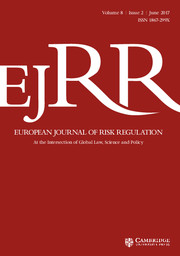
Special Issue on Regulating Climate Engineering in the European Union: Opening Editorial

A Critical Examination of the Climate Engineering Moral Hazard and Risk Compensation Concern
The widespread concern that research into and potential implementation of climate engineering would reduce mitigation and adaptation is critically examined. First, empirical evidence of such moral hazard or risk compensation in general is inconclusive, and the empirical evidence to date in the case of climate engineering indicates that the reverse may occur. Second, basic economics of substitutes shows that reducing mitigation in response to climate engineering implementation could provide net benefits to humans and the environment, and that climate engineering might theoretically increase mitigation through strong income effects. Third, existing policies strive to promote other technologies and measures, including climate adaptation, which induce analogous risk-compensating behaviours. If the goal of climate policy is to minimize climate risks, this concern should not be grounds for restricting or prohibiting climate engineering research. Three potential means for this concern to manifest in genuinely deleterious ways, as well as policy options to reduce these effects, are identified.
Published online ahead of print in 2014.
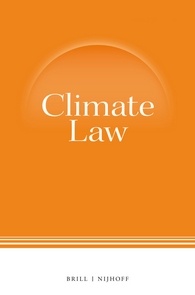
An Economic Analysis of Liability and Compensation for Harm from Large-Scale Solar Climate Engineering Field Research
Solar climate engineering is under increasing consideration as a potential means to reduce climate change risks. Its field research may generate knowledge to reduce climate risks to humans and the environment and will, at a large-enough scale, pose its own risks, some of which will be of the transboundary kind. Liability or compensation for harm is frequently referenced as a possible component of international regulation of solar climate engineering but has been insufficiently developed. This article offers an economic analysis of the possible interrelated roles of rules, liability, and compensation in the future international regulation of large-scale field research in solar climate engineering. Notably, the benefits, risks, and incentives of climate-engineering research are unlike typical high-risk activities. The analysis proposes a hypothetical international agreement that links general and procedural rules for research, an international compensation fund, and limited, indirect state liability with a duty-of-care defence.
Reprinted in Environmental Law and Economics, Klaus Mathis (Ed.), Economic Analysis of Law in European Legal Scholarship series (Springer, 2017).

The International Regulation of Climate Engineering: Lessons from Nuclear Power

Climate Engineering Field Research: The Favorable Setting of International Environmental Law
As forecasts for climate change and its impacts have become more dire, climate engineering proposals have come under increasing consideration and are presently moving toward field trials. This article examines the relevant international environmental law, distinguishing between climate engineering research and deployment. It also emphasizes the climate change context of these proposals and the enabling function of law. Extant international environmental law generally favors such field tests, in large part because, even though field trials may present uncertain risks to humans and the environment, climate engineering may reduce the greater risks of climate change. Notably, this favorable legal setting is present in those multilateral environmental agreements whose subject matter is closest to climate engineering. This favorable legal setting is also, in part, due to several relevant multilateral environmental agreements that encourage scientific research and technological development, along with the fact that climate engineering research is consistent with principles of international environmental law. Existing international law, however, imposes some procedural duties on States who are responsible for climate engineering field research as well as a handful of particular prohibitions and constraints.
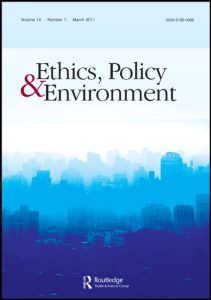
Response to Svoboda and Irvine (Ethical and Technical Challenges in Compensating for Harm Due to Solar Radiation Management Geoengineering)
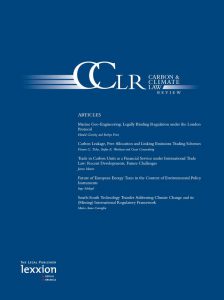
Climate Engineering Research: A Precautionary Response to Climate Change?
In the face of dire forecasts for anthropogenic climate change, climate engineering is increasingly discussed as a possible additional set of responses to reduce climate change’s threat. These proposals have been controversial, in part because they – like climate change itself – pose uncertain risks to the environment and human well-being. Under these challenging circumstances of potential catastrophe and risk-risk trade-off, it is initially unclear to what extent precaution is applicable. We examine what precaution is and is not, and make a prima facie case that climate engineering may provide means to reduce climate risks. When precaution is applied to the currently pertinent matter of small to moderate scale climate engineering field tests, we conclude that precaution encourages them, despite their potential risks.
Reprinted in Environmental Law and Climate Change, Jonathan Verschuuren (Ed.), The International Library of Law and the Environment series (Edward Elgar, 2015).
